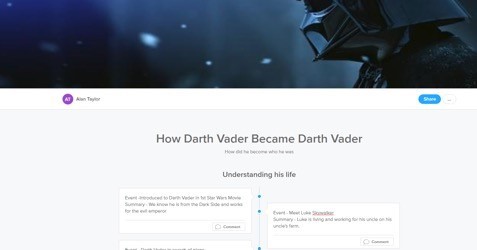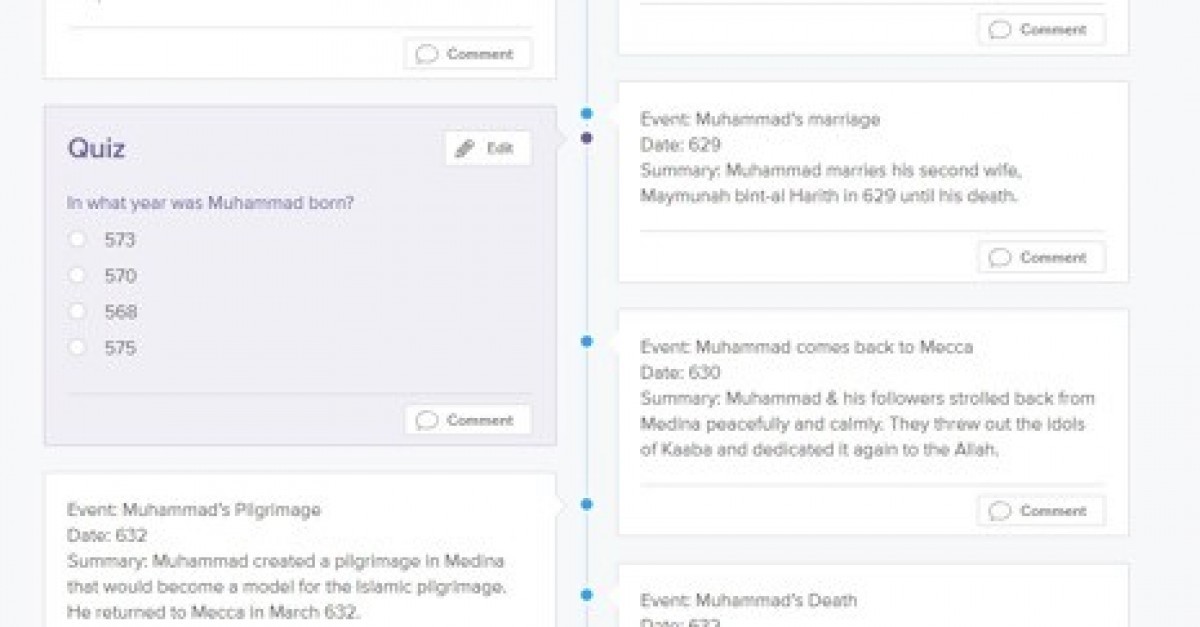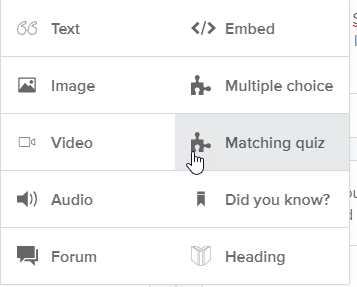Start Your Story with Sutori
At the beginning of each school year, I will discuss their perception of social studies/history with students. Many students will state, "It's boring" or "What does it have to do with me." I will mention to them that in learning about history, we can learn something about ourselves. That the same emotions, experiences, thoughts, or dreams may not be so different. I also ask them how many people like to read. In most cases, a majority of students like to read. So, I will follow this up with a question about what books they like reading. Most will state they like books that focus on excitement, adventure, mystery, intrigue, drama, and action.
I then explain to them that learning about history is very similar. In history, there are all those things: tremendous technological advances, backstabbing, fighting for power, and even romance (usually invokes many yuks in my 6th grade classroom). I will tell them one of the problems with some people's experience with history is that they learn a series of random facts (Columbus sailed the ocean blue in 1492) without understanding. When asking why he was sailing the ocean blue, my next question is, why was he doing it? Some students will recall he was trying to find a shorter route to China. When questioning students about his voyage's purpose, where he got the idea or motivation, and how he learned about what was in China or the Far East, I'm often met with blank faces.
And here is the problem: students were learning about certain essential facts, events, or dates but did not know how events can be interconnected. Here is where Sutori (https://www.sutori.com/ ) comes into play. I want students to be able to look at a series of events throughout a period and begin to make connections. Sutori is a great tool to assist in this process. Sutori is an online tool that allows students to work from anywhere (with Internet availability) on their timelines. In creating their timelines, they can add text, images, and videos and embed things from Google Docs, Quizlets, Padlets, and PDFs.
History is not just a set of random facts. It is like any good story, it has drama, struggles for power, and even romance.
by Dr Alan J. Taylor, Ed.D., 2018
Options with Sutori
As an introduction to creating a timeline and understanding the concept of making connections, I use the example of how Darth Vader became Darth Vader. I explain to students that Darth Vader appeared when Star Wars first came out (Episode 4 – A New Hope), and we see how evil he is without understanding his past. By the end of Episode 5 – The Empire Strikes Back, we learn that Vader is Luke's father. So what went wrong? How did he turn into Darth Vader? Years later, in episodes 1 through 3, we learn how he went from Anakin Skywalker to Darth Vader. I then created my timeline on how Darth Vader became Darth Vader.
I use Darth Vader, as an example to get students to understand that events are interconnected. In this case, Darth Vader didn't just wake up one morning and become Vader. Having a timeline of events I can now begin to see how these aren't just a series of random events. By using higher level thinking skills, students can put the pieces together.
In the time I've used Sutori with students, it has been a real "ah hah" moment as they construct and organize their timelines. What used to be just a list now has meaning! Students begin to see the interconnections. Students can work together or individually and comment to one another. Some students even enjoy adding a quiz for other students within their timeline.
As a teacher I really like the analytic tools within Sutori. As students are in class, I can quickly see how much class time they are spending on their timelines. If I see someone that hasn't spent much time on their timeline, I can work with them as individuals or collaborative groups to assist them in overcoming any obstacles that are impeding the construction of their timelines. If I setup a rubric to grade the timelines that includes x amount of text, images, videos, etc., again I can get an overview of individual students. The analytic tools are a tremendous time saver and reality checker for me.
Often the project doesn't end there. I will then have students use their timelines to put together a story. They will utilize another web-based tool to create their stories. As they begin to construct their stories, they begin to see that history isn't just a series of random events. History is best told by telling a story about what they learn. And it all begins from constructing their Sutori timelines.
When you subscribe to the blog, we will send you an e-mail when there are new updates on the site so you wouldn't miss them.




Comments